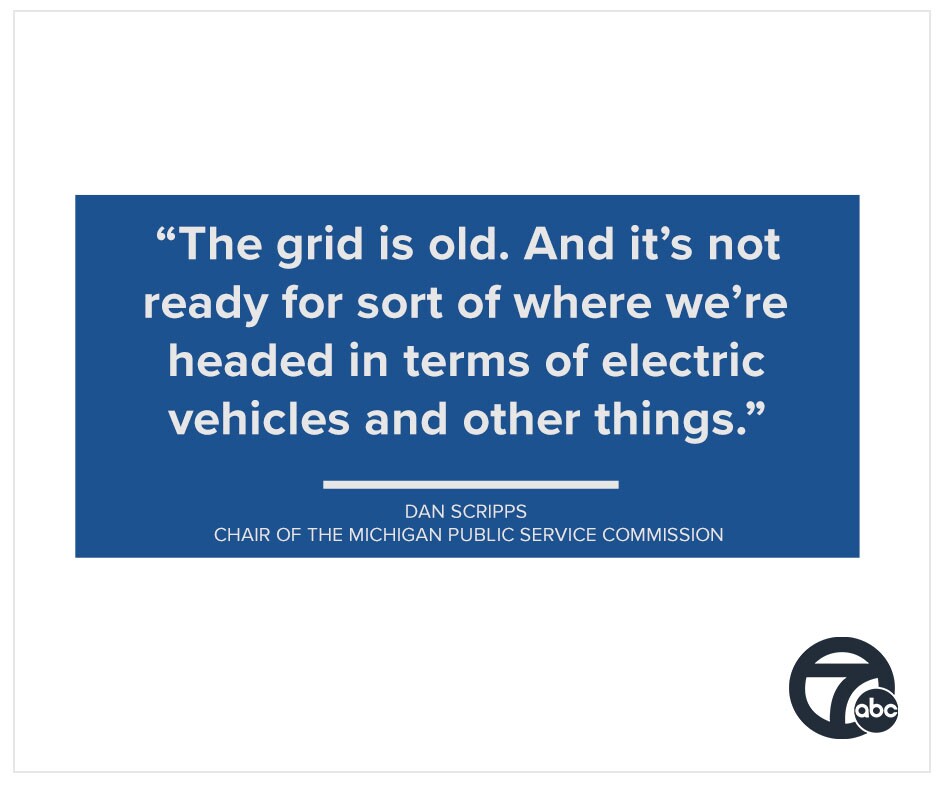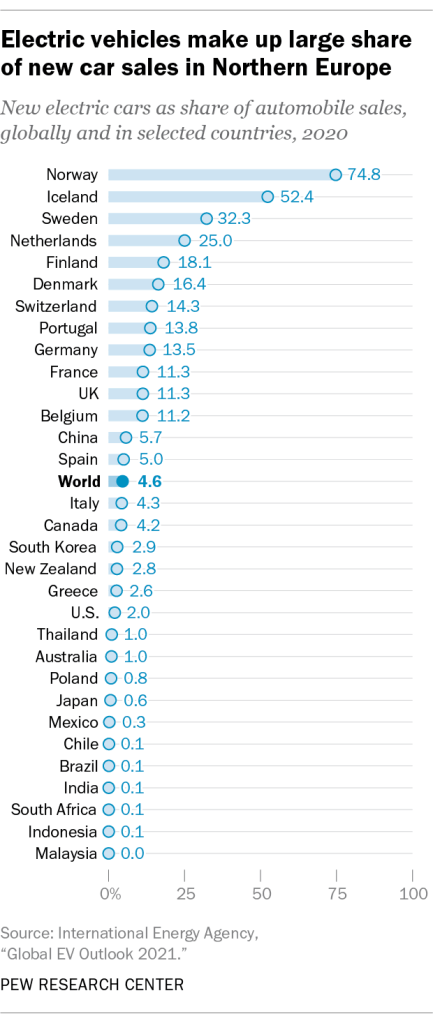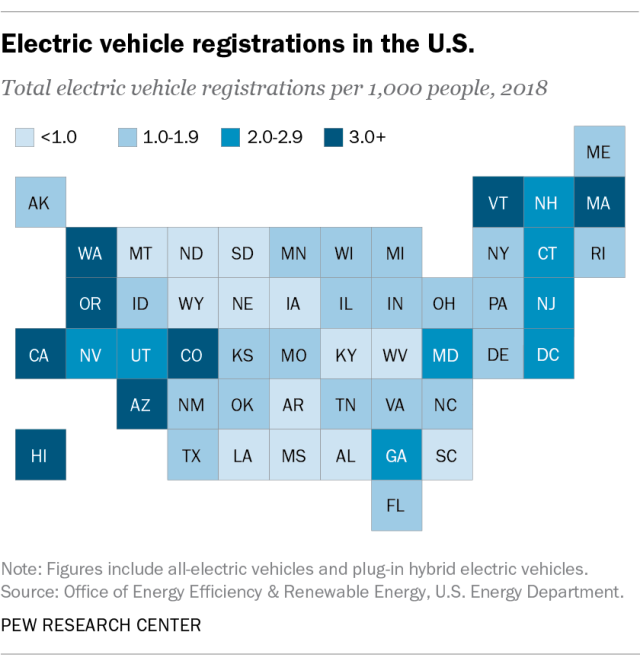(WXYZ) — More and more people are switching to electric vehicles, or EVs. Yet in light of recent power outages, some are asking if companies like DTE is ready for the EV future.
Gwen Wee lives in East English Village. Her power recently went out when a DTE transmission line failed.
“I know more people are buying electric cars. I know in the last two weeks, I’ve had two people that were so happy that they have EV cars and then, crash, no power. Fortunately for them, they could do some work remotely,” explained Wee.
She was not sure if DTE is ready for the switch to EVs.
Dan Scripps, chair of the Michigan Public Service Commission said the grid needs more work.
“The grid is old. And it’s not ready for sort of where we’re headed in terms of electric vehicles and other things,” Scripps explained.
He said they are working on it.

“That’s been a focus of the commission and the power grid initiative. And we’re making sure we’re getting our arms around what needs to happen as we update the grid for the future,” said Scripps.
Tony Tomczak is the vice president of Electric Sales and Marketing for DTE.
"This is like the revolution that we saw back in the 50s when people had air conditioners,” explained Tomczak.
He said it was a big change for the public and energy companies at that time.
“For what we had to have available for generation and our systems to be able to get power to our homes. It’s kind of the same thing going on here,” Tomczak said.
Related:EVs force emergency responders into new training to avoid electrocutions, reigniting fires
He responded to questions about if DTE was ready for the EV future?
“So I think that we are ready to a certain degree. We are not totally ready for a total switch to electric vehicles across the board. Today, we’re ready if 20% of our population in this area were to become EV. Yes, we are ready.”
He explained right now, less than 1% of cars in the area are EVs. Still, he said a billion dollars a year are being invested to harden the system to be ready to move past 20%. Tomczak said it will take a change in the way people think about using energy.
“Again, I think it goes back to that mindset. Being able to understand not only that, ‘Hey I need electricity and I need it for my vehicle.’ Well, what’s the best time do that? What’s the lowest cost time to do that? What helps then in a bigger sense to level the load which is a benefit to all of our customers.”
To that end, Ian Hiskens, professor of Electrical Engineering at the University of Michigan agrees.
“I think the advice would be look at doing things in a clever way rather than just building new physical infrastructure,” said Hiskens.
However, right now, he’s not giving anyone a great report card.
“The utilities, I don’t think have prepared very well for the EV future,” said Hiskens. “There’s not really the infrastructure being developed to be able to support large scale electric vehicles.”

He explained how much extra power, how much more of a load everyone driving EVs would put on the system.
“It’s not huge, but it’s very much dependent on what time of the day the extra is being demanded. So if you add that 10% on to that already existing peak demand, then that’s a big problem. If you put that 10% on, if it’s charging to the point where there’s a lot of spare capacity in the network like overnight, then it’s not a problem,” Hiskens explained.
He said the answer can be simpler than most would think.
“That overloading can be addressed by increasing the size or doing something clever about scheduling.”





